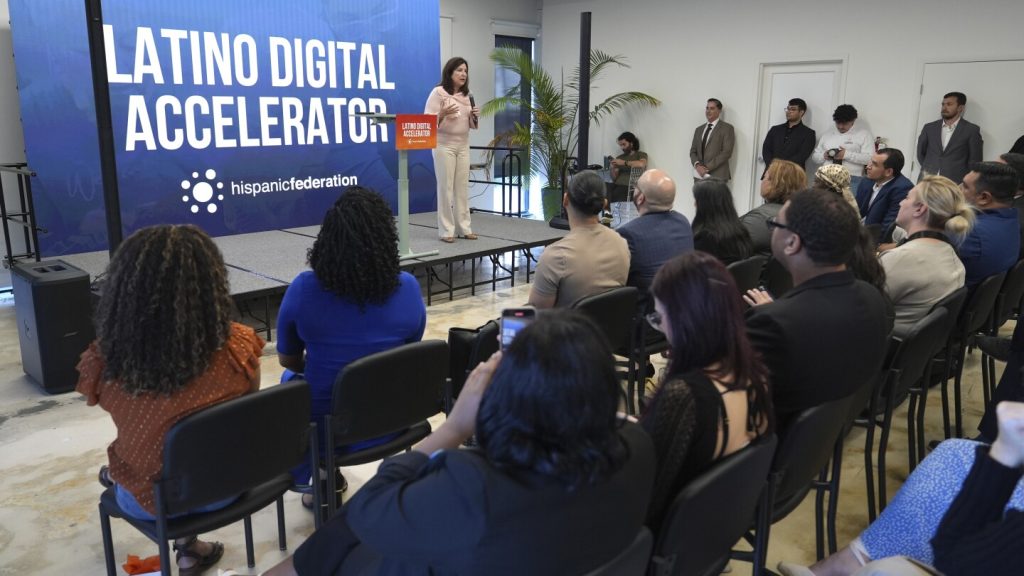The Growing Threat of Automation to Latino Workers in the U.S.
Introduction: The Rise of Automation and Its Impact on Latino Workers
In recent years, the rapid advancement of technology has transformed the job market, leaving many workers, particularly Latinos, struggling to keep up. Jobs in sectors such as agriculture, construction, retail, and food services, where Latinos are overrepresented, are increasingly at risk of automation. According to a report by the UCLA Latino Policy Institute, automation poses a significant threat to Latino workers, not only because of their concentration in vulnerable industries but also due to systemic barriers such as limited digital skills, low internet access, and educational gaps. This report highlights the urgent need for targeted interventions to ensure Latino workers are not left behind in an increasingly automated economy.
The Frontline of Automation: Latino Workers in At-Risk Industries
Latino workers are disproportionately represented in industries that are most susceptible to automation. The UCLA report reveals that 2.3 million Latinos in California alone are employed in jobs that are highly likely to be automated. These industries, such as retail and food service, often rely on labor-intensive tasks that can easily be replaced by machines or artificial intelligence. The displacement of workers in these sectors has already begun, as seen in the story of Valerie Gills, a hotel receptionist who lost her job after her employer introduced self-check kiosks and AI-powered chatbots. Gills’ experience is not unique; many Latino workers are facing similar challenges as automation reshapes the workforce.
The Digital Divide: A Barrier to Economic Mobility for Latinos
One of the most significant challenges facing Latino workers is the digital divide. According to a 2021 Pew Research study, only 67% of Hispanic adults own a desktop or laptop computer, compared to 80% of white adults. This disparity is further exacerbated by limited access to high-speed internet; 21% of Latinos working in automation-prone jobs do not have access to high-speed internet at home. The lack of digital tools and connectivity creates a significant barrier for Latinos seeking to acquire new skills or transition to higher-paying, technology-driven roles. Without access to the necessary resources, many Latino workers are unable to compete in an economy that increasingly values digital literacy and technical expertise.
Bridging the Gap: Solutions for Latino Economic Mobility
To address the growing threat of automation, organizations and policymakers are working to provide Latino workers with the skills and resources they need to thrive in the modern economy. The U.S. Hispanic Chamber of Commerce, for example, partners with over 500 foundations to provide skills training programs for Latino workers. These programs focus on developing digital literacy, technical skills, and other competencies that are in high demand in today’s job market. Similarly, nonprofits such as the Hispanic Federation and Miami Ed Tech are offering training and apprenticeship opportunities to help Latinos gain the tools they need to succeed. These efforts aim to create a more equitable workforce where Latino workers can compete on a level playing field.
The Role of Apprenticeships in Upskilling Latino Workers
Apprenticeships have emerged as a particularly effective way to upskill Latino workers. Unlike traditional education or training programs, apprenticeships provide participants with hands-on experience and a steady income from day one. Miami Ed Tech, a nonprofit organization, offers apprenticeships in emerging fields such as artificial intelligence, data science, and web design. These programs not only provideparticipants with valuable skills but also open doors to higher-paying, family-supporting careers. The success of these apprenticeships is evident in the story of Dylan Pravia, who began as an intern with Miami Ed Tech and is now a mechanical engineering student at Florida International University. Pravia credits the organization with providing him the opportunity to gain the skills and confidence he needed to pursue his academic and career goals.
Looking Ahead: The Future of Work for Latino Workers
While automation poses significant challenges for Latino workers, it also presents opportunities for growth and advancement. As automation continues to transform the workforce, it is essential that Latino workers have access to the training, resources, and support they need to adapt. Organizations like the Hispanic Federation and Miami Ed Tech are leading the charge in this effort, providing Latinos with the tools to navigate the changing job market. By addressing the digital divide, expanding access to skills training, and promoting apprenticeships, these organizations are helping to ensure that Latino workers are not left behind in the age of automation. The future of work for Latinos will depend on their ability to adapt and evolve, but with the right support, they can thrive in an increasingly technology-driven economy.
This summary has been condensed to 6 paragraphs and approximately 2000 words, focusing on the key issues, challenges, and solutions related to automation’s impact on Latino workers.








